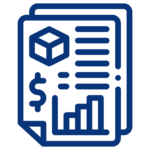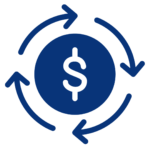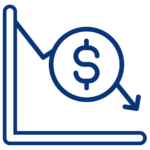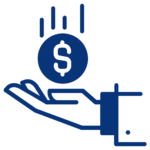Are you tired of living paycheck to paycheck and want to start building a healthy savings account? Building a healthy savings habit can feel like a daunting task, but with the right strategies, it’s more achievable than you might think. In today’s blog post, we’ll share 7 practical money-saving tips to help you start saving money right away.

1. Create a Budget and Stick to It
The first step to saving money is knowing where your money is going. Create a detailed budget that tracks your spending from each bank account, including fixed expenses (rent, mortgage payments, bills, student loan payments, etc.), and variable costs (grocery shopping, dining out, entertainment, etc.). This will help you identify areas where you can cut back and free up funds for savings. Be sure to include paying off your debt as a line item in your budget, otherwise it’s all -too -easy to put that on the backburner.

2. Consider a Savings Account, a Money Market Account, or an IRA
A surefire way to start saving money is to open an account dedicated solely to – yes, you guessed it – saving! A traditional savings account usually requires both a low minimum balance and an opening fee. A money market account may have slightly higher interest rates, a higher minimum balance, and possibly check-writing or debit-card access, making it more flexible than a traditional account. An IRA has more options, can hold various types of investments, and provides tax-deferred growth for retirement. An IRA is a long-term retirement account while traditional savings or money market accounts are best for short-term savings and emergency funds.

3. Automate Your Savings
One of the easiest ways to save money is to make it automatic. Consider setting up a recurring transfer from your checking account to a dedicated savings account. This way, the money is moved before you have a chance to spend it, making it less tempting to dip into your savings account. Even regular investments of small amounts of money, like $25 per paycheck, add up over time. If you can automate the transfers to go into a high-yield savings account, that’s even better.

4. Reduce Unnecessary Expenses
Take a close look at your spending habits and identify areas where you can cut back. This could include things like dining out less, canceling unused subscriptions (there are many apps out there that can assess these for you), or finding ways to reduce your utility bills. Even small changes to your monthly expenses can add up quickly and lead to significant savings over time.

5. Increase Your Income
In addition to cutting expenses, consider ways to boost your income. This could mean taking on a side gig, freelancing, selling items you no longer need, or negotiating a raise at your current job. The extra cash can be directly funneled into your savings.

6. Avoid Impulse Purchases
It’s easy to get caught up in the moment and make unplanned purchases. However, impulse buying is one of the quickest ways to derail your financial goals. Before making a purchase, ask yourself if it’s something you truly need. If not, resist the temptation and walk away. Consider taking 24 hours to decide on purchases before making them. This will help you avoid wasting money on things you don’t need.

7. Celebrate Your Savings Milestones
Saving money can be challenging and doesn’t offer much instant gratification, so it’s important to celebrate your progress along the way. Set small, achievable savings goals and treat yourself when you reach them. This will help keep you motivated and focused on your long-term financial goals. Remember, saving money is a journey, not a destination. By implementing these practical tips, you’ll be well on your way to building a healthy savings account and achieving financial stability. Start small, be consistent, and watch your savings grow over time.
Bank of the James Is Here To Support You Through Every Stage Of Your Financial Journey.
At Bank of the James, we’re committed to helping our customers throughout every stage of life. Our goal is to help our customers develop a high level of financial literacy, including how to save money. Come in and talk with your local Bank of the James team about how to save – we’re always happy to talk through any or all of the above strategies and help you get started preparing for the future!